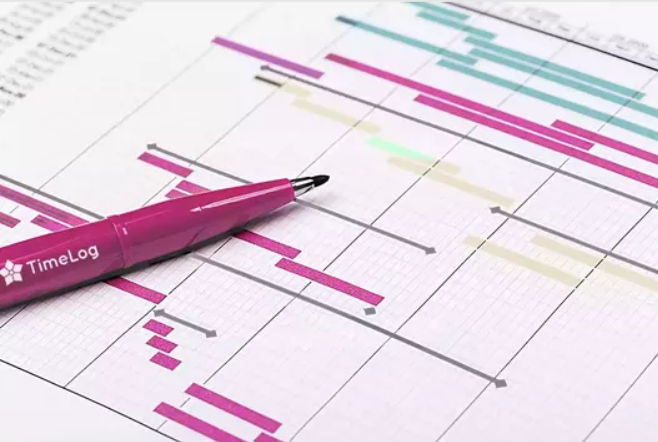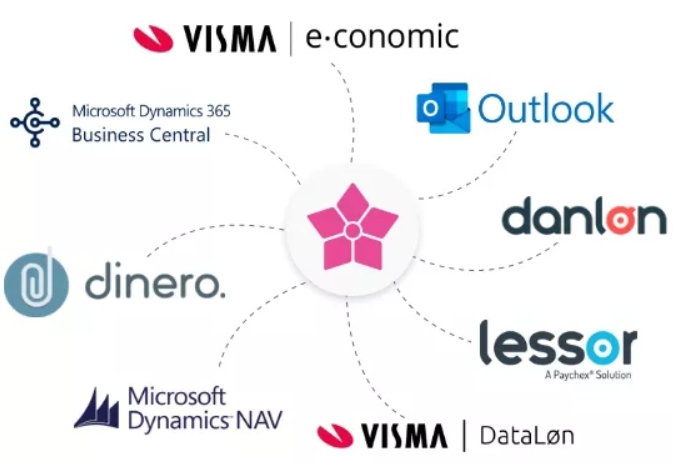Multiple Legal Entities - TimeLog MLE
You can find the page in the System Administration -> General settings -> Legal entities
If you run businesses with offices in multiple countries or are part of a large group, you may have staff employed by company A, but who work on projects owned and invoiced by company B. Use TimeLog MLE to create transparency and follow up on the financials across legal entities.
You need to talk to us before you get started with the setup. Contact our Customer Success team via support@timelog.com, phone +45 70 200 645 or start a chat with us to learn more about the process.
What you need to consider before you get started
No matter if you've used TimeLog for a while or will start now, there are a number of things you need to do or consider, before you get started.

- Align expectations across the organisation
Identify the key stakeholders across your organisation and find out what they expect from the new setup. Examples: Which data do they want to measure on, which employees belong to which legal entity, who owns specific processes - Which are global processes, which are local processes outside of TimeLog
Find out which of the work processes you have in your company that can be the same for all legal entities and match the setup of TimeLog. Then you need to find out in which places you need to adjust the setup to fit the local setup for each legal entity. Even if you have more companies in the same country, you might find out that they run the same processes in different ways.
Example: You have an agreement that hours must be tracked for the week and timesheets closed at 10 AM the following Monday on a global level. An example of a local process is vacation and over time compensation, where you may have different rules in each location
- Amount of transparency
Find out who in your company needs access to everything, it could e.g. be the group CEO and CFO, and who only needs access to the data in the legal entities. You can use the role setup in TimeLog to achieve this and make sure not all employees can access all data for project and employees - Are your legal entities on the same maturity level?
Find out how mature your legal entities are and where you can improve processes. Take the great maturity test now, and find out how easy you can work with each entity to improve your profit - Align the global settings in TimeLog
Most of the setup you do in the system administration apply to all legal entities, so you need to agree on the settings with your key stakeholders. This is to align that you see the right data in the right place, and to secure that you don't need to spend extra time on these discussions during the implementation
Time and resources needed to succeed with TimeLog MLE
We can't set a fixed time for the preparations you need to do, as it varies depending on your company size and the number of legal entities you want to add in TimeLog.
Once you've agreed on the structure and you have all agreements in place internally, it takes about half a day to set everything up with a consultant from TimeLog - without integrations.
The integration setup also depends on how many legal entities you have and which salary and finance systems you want to integrate to.

Areas in TimeLog you need to prepare for each legal entity
- Hourly rates
- Employee costs
- Employees
- Finance and salary integrations
- Number series
- Role setup
Customers and contacts are global and not linked to specific legal entities. You need to consider this, when you name the customers. If you need to integrate TimeLog to more financial systems, you need to be extra aware of this, when you set up the system.
You control access to data via the roles and rights setup. Some people can have access to all data for all legal entities, and e.g. country managers can have access to their legal entity, e.g. Sweden or Germany.

Areas where you'll see data for the legal entities
The setup of TimeLog MLE will affect the data within these areas:
- Projects
- Invoicing
- Currencies
- Reporting
Areas we have in the pipeline for the future
We continously work to build the best TimeLog PSA to support your growth. Learn more about what we do to support your business development and get an insight into some of our coming features and releases with a single click here.
Examples of when it makes sense to use TimeLog MLE
It doesn't necessarily make sense for all bigger companies to make use of TimeLog MLE. We here list some examples from our customers who use it now, so it's easier for you to determine, if it can benefit your company as well.
A colleague tracks expenses in different currencies
Your colleague needs to know the exchange rate for that specific day or needs to put in the currency exchange rate that the cardholder provided to get the correct reimbursement. Your colleague also needs to be able to see all the expenses in the legal entity currency (reimbursement currency).
Example: I work in Sweden for Company A. I did consulting in Norway and Germany. I had expenses on these business trips and now I need to register these expenses in NOK and EUR and see how much I will get back in SEK.
CEO/CFO follows up on budgets on company level
To follow the budget on company level (or other levels) the CEO/CFO needs to be able to see everything in the company’s corporate currency. If the company is global or has financial data in other currencies, it needs to convert that currency to the company currency. Some companies will only want a “good enough” exchange rate to follow up, but for other companies the exchange rate is crucial, and they want full control of the currency.
Example: I need to know the revenue for Q1 and compare that to my budget I have in EUR. The company has revenue from five different currencies, and I need to see it in the currency I have my budget in. I also need to see, if I gained or lost revenue due to currency fluctuation.
Regional managers follow up on their budgets
Regional managers or an assistant to the regional manager need to be able to follow up on their budgets. They might have the budget in their legal entity currency and therefore they need to get all the relevant financial data changed to that currency.
Project managers follow up on their budgets
A project manager needs to follow up on the budgets for their projects. If the project has revenue or cost in other currencies, then TimeLog needs to convert that to the project's main currency to follow up on the budget.
Want to know more and get started?
Contact our Customer Success team via support@timelog.com, phone +45 70 200 645 or start a chat with us to learn more about the process.